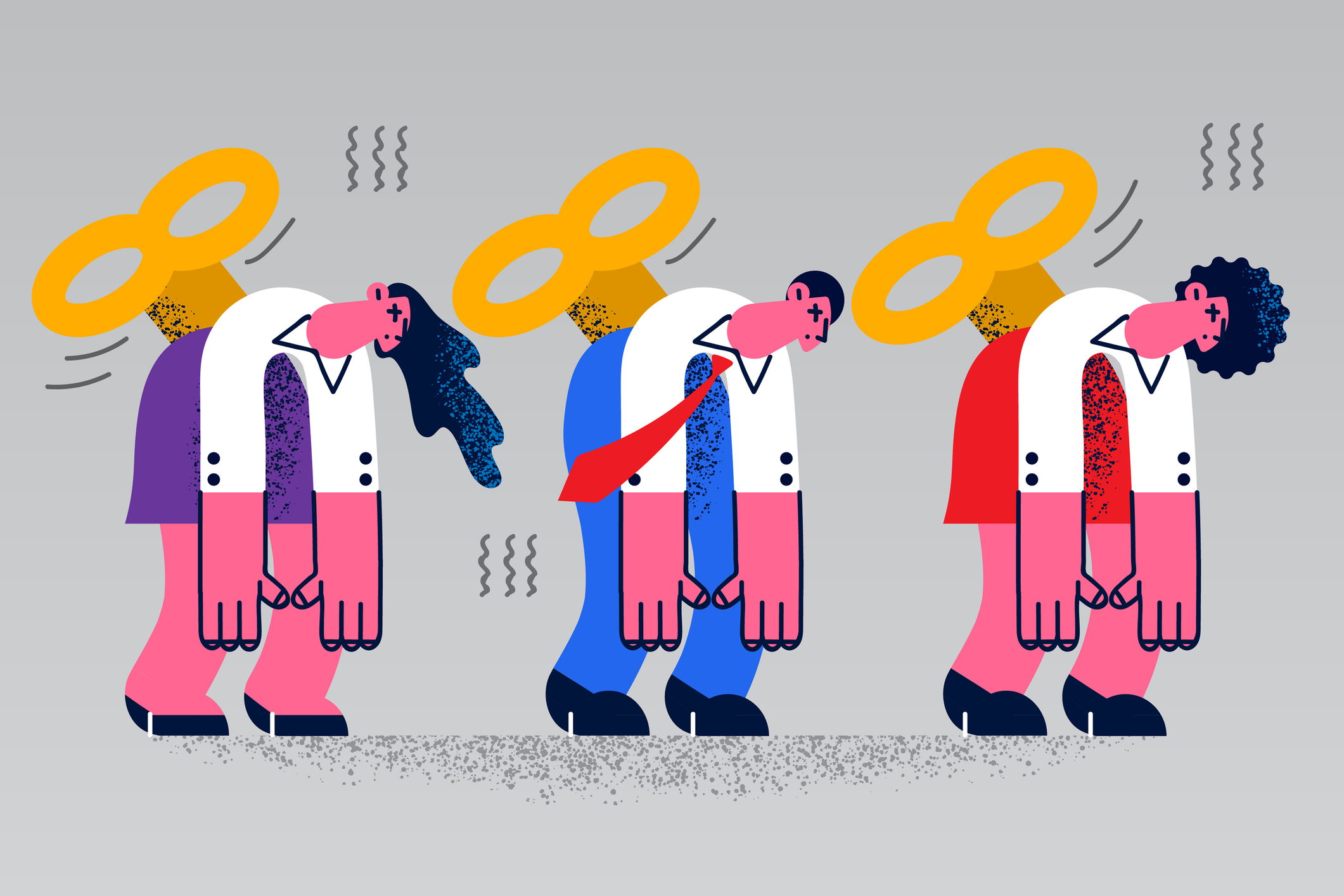EVERYONE AT TIMES feels tired, irritable, and stressed, or experiences other negative physical and emotional responses to the pressures of our modern world. According to the November 2022 Aflac WorkForces Report, 59% of American workers are experiencing at least moderate levels of burnout. So, how do you prevent occasional exhaustion or cynicism from becoming full-on, career-limiting burnout for you and your employees? Be aware and proactive, experts advise.
“Think of burnout as ongoing and unmanageable job-related stress,” says Don Crawley, author of The Compassionate Geek and an IT customer service speaker. Symptoms are exhaustion (emotional, physical, psychological, or all three), irritability, a short temper, less patience, difficulty in concentrating, and even hopelessness.
Gina Calvano, author of From Burnout to Purpose, adds a feeling of powerlessness to that list. She says burnout is the opposite of engagement, which is a sense of personal power to make a meaningful contribution to others.
In today’s work environment, there are a variety of factors causing burnout. “Uncertainty is a key stressor in all circumstances,” says Crawley, and the recent spate of tech layoffs combined with returning to the office is increasing stress, and thus, burnout.
Calvano believes working exclusively off-site increases the risk of burnout too.
Plus, she adds, the IT workforce has been depleted, drained, and burned out by external factors like the pandemic and supply chain disruptions for far too long. This pain makes joining the Great Resignation, “quiet quitting,” or returning to school feel like better options than continuing to work.
Take a Self-Check
To start addressing your own potential for burnout, do a self-check: Are you chronically mentally and physically exhausted? Do you have a negative or abrasive attitude? Do you wish to isolate or withdraw from others? Are you apathetic or experiencing low morale? Do you feel powerless to take care of things that have meaning for you at your job? “If you said yes to any of these questions, you might be on the path to burnout,” Calvano notes.
Crawley recommends being proactive in managing problems that lead to burnout. “Make a list of your stressors and frustrations and take action on those items you can control.” Address these one at a time to avoid feeling overwhelmed.
In addition, Crawley says, “Be intentional about finding ways to recharge yourself.” Common options are hobbies, sports, family activities, and time with friends. A healthy work-life balance helps prevent burnout for both leaders and employees.
Then consider the collective behavior of your staff. Your team will always talk about needing a break, but true staff burnout is ongoing stress that results in increased absenteeism, greater sensitivity to feedback, and reduced productivity, says Crawley.
“Talk to your teams about burnout one on one,” Crawley advises. Discuss common causes of stress and burnout in team meetings. “Pay particular attention to how your team members interact with each other,” he adds, and be transparent about the business areas that create conditions for burnout.
“IT people are generally good at troubleshooting,” Crawley continues, so ask for employee input, even on nontechnical problems. Each burnout red flag, such as increased workloads, interpersonal conflicts, and lack of purpose, affects people differently.
Calvano says that traditional approaches to sustainable engagement no longer work. “Employees want holistic well-being,” she says. That can be achieved by offering more autonomy, providing education about chronic stress and burnout, and promoting relatedness—a perspective with shared experiences, accountability, and values among the team.
In addition, Crawley says, show appreciation in ways appropriate to each person. Some want public cheers and applause, but others prefer private expressions and rewards. Celebrate victories. Consider a group activity after a successful large project and let the team choose what it is.
Finally, Crawley recommends offering employee assistance programs that include mental health counseling to help your team learn coping strategies, and requiring leadership training for your management team.
“Stress and burnout are real,” he acknowledges, but not inevitable.
Image: iStock















